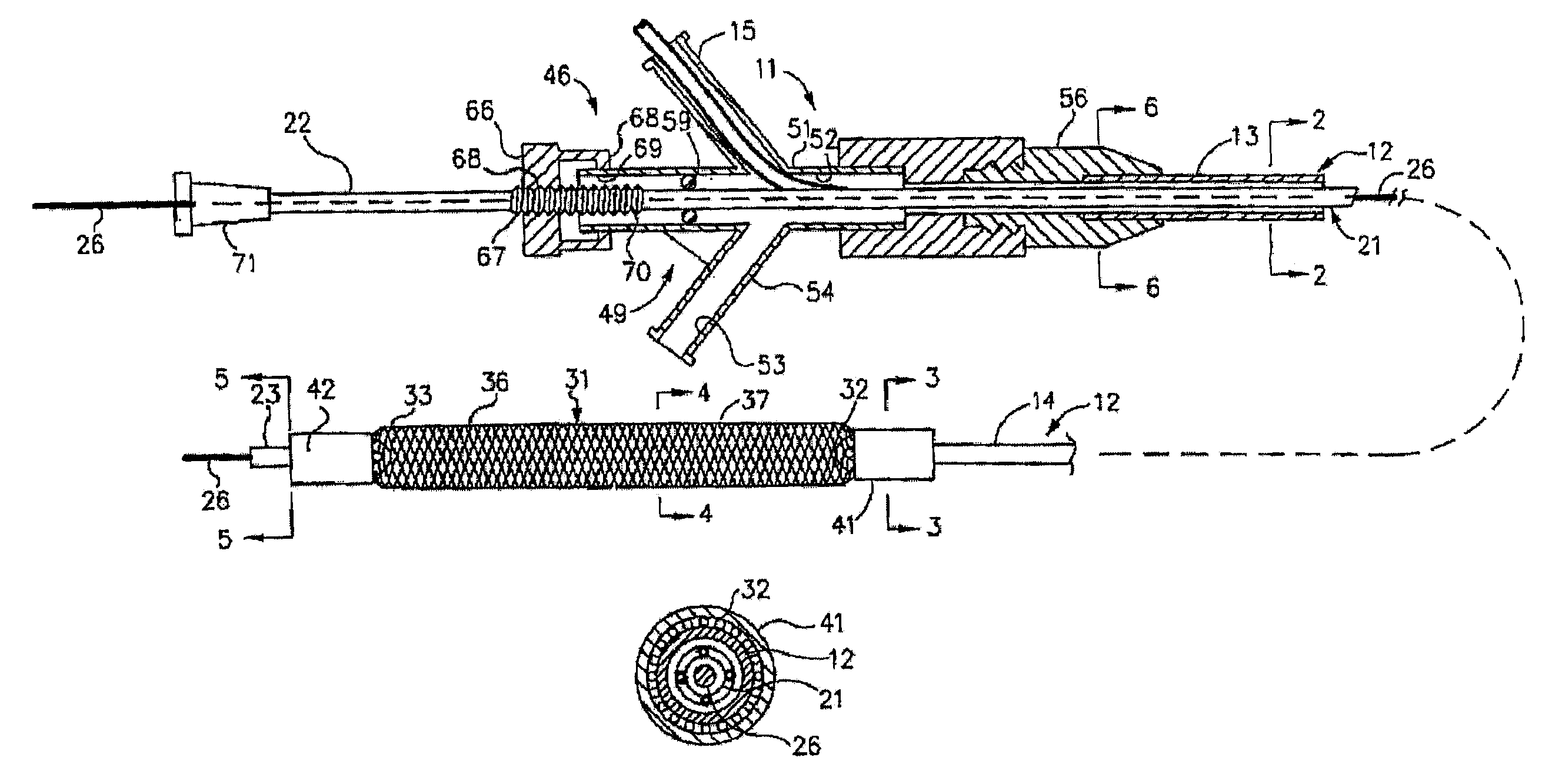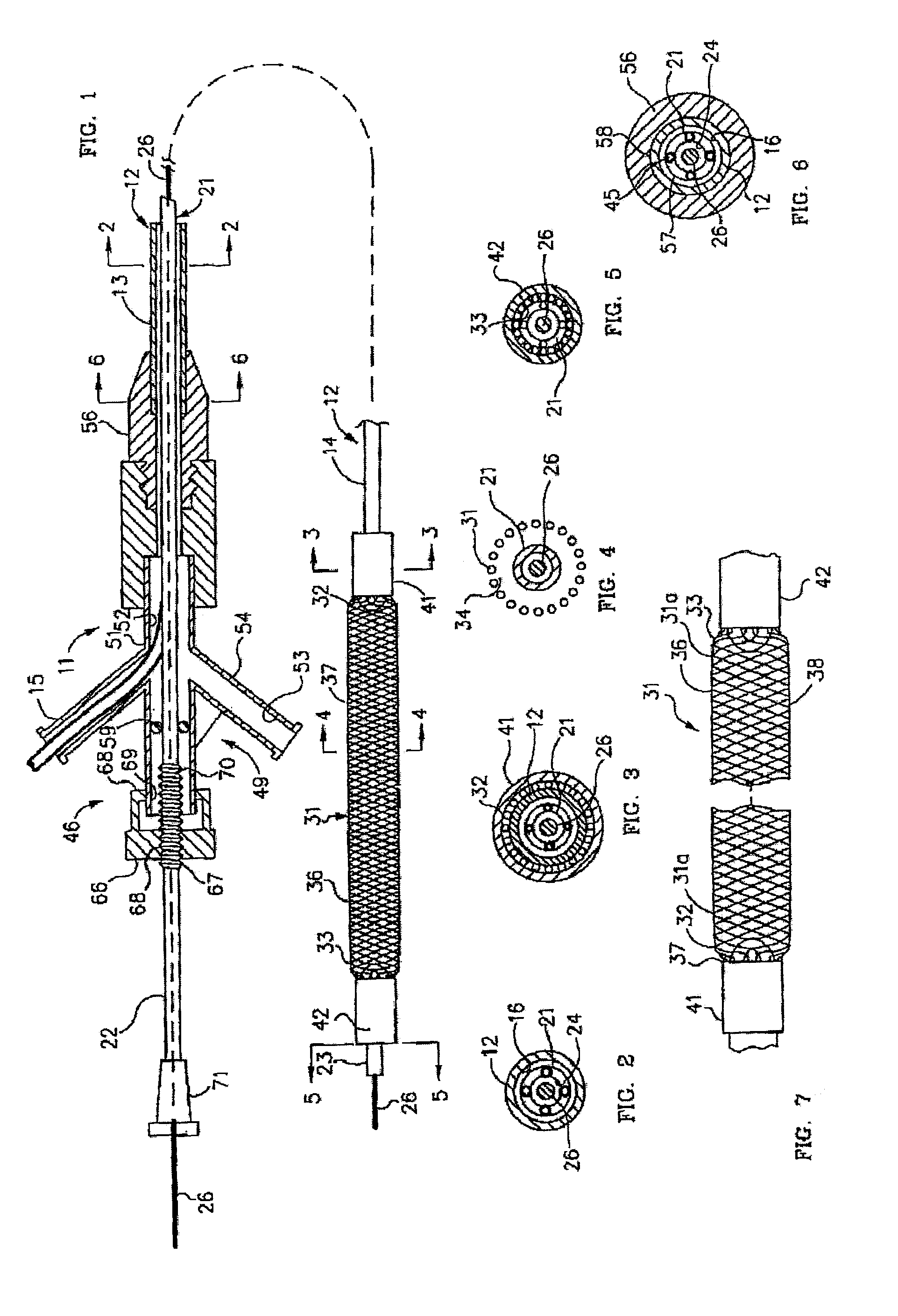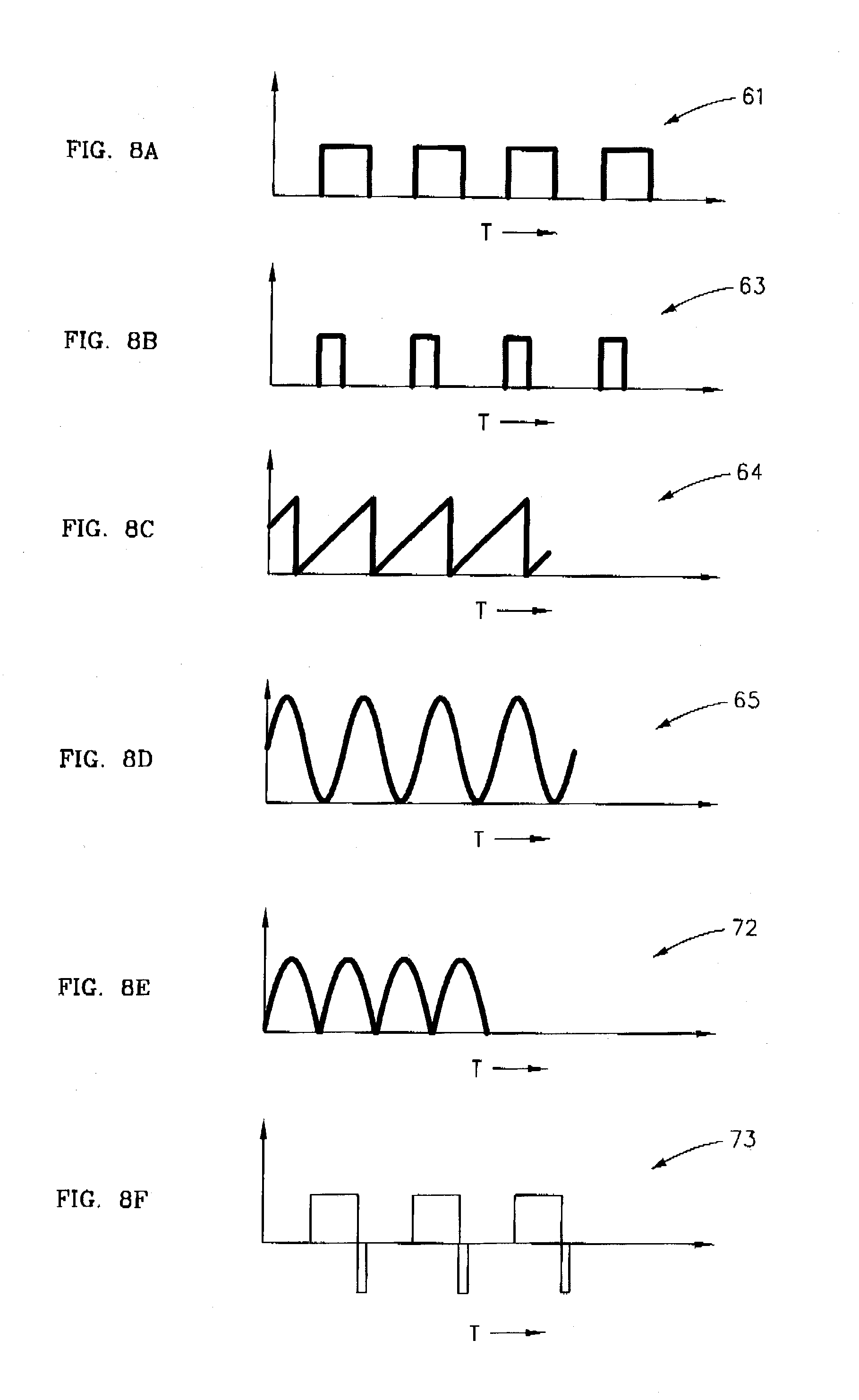Polymer coated device for electrically medicated drug delivery
a technology of drug delivery and polymer coating, which is applied in the field of polymer coating devices for electrically medicated drug delivery, can solve the problems of traumatic open heart surgery, low penetration rate, and high potential systemic effects of patients, so as to promote and maximize the penetration, promote and maximize the delivery, and minimize the effect of potential systemic effects
- Summary
- Abstract
- Description
- Claims
- Application Information
AI Technical Summary
Benefits of technology
Problems solved by technology
Method used
Image
Examples
example 2
Local Delivery of E2F Decoy
[0098]Preparation of compounded E2F Decoy, sodium dodecyl sulfate (SDS) and hydrogel polymer solution precursor for coating.
[0099]Prepare SDS stock solution in the solvent of dimethyl sulfoxide (DMSO) at the concentration of 0.6 mg / ul. Weigh 747 mg of hydrogel solution onto a clean plastic plate having two elevated spacers at 0.5 mm height and separated by 5 cm. Add 69.8 mg of E2F Decoy and 70 ul of DMSO. Mix well. Add 35 ul of SDS stock solution (or 21 mg of SDS). Mix well with the spatula. Upon mixing, spread the viscous mix evenly with the spatula or a glass rod within the confines of the two spacers. Use both gloved hands to hold both ends of the catheter mesh portion and roll the mesh gently over the viscous polymer mix once, or twice if necessary. This coating is designated to contain 7.5% paclitaxel and 2.25% SDS using the initial weight of polymer mix as a reference.
[0100]When the coating is completed, the mesh portion of the catheter is dipped int...
example 3
Iontophoretic Release of Paclitaxel
[0103]In an experiment to measure the amount of taxol released, a mesh segment that was coated with a hydrogel that was loaded with paclitaxel according to the procedure described in Example 1 was placed in an electrolytic cell and discharged at a current of 10 milliamps and a voltage of 10 volts for 10 minutes. The solution was then analyzed for paclitaxel concentration by high performance liquid chromatography. As shown in FIG. 1, there was minimal paclitaxel release without power, but a significant increase of the release of paclitaxel with power.
example 4
Iontophoretic Delivery of Pacltaxel into Isolated Coronary Arteries
[0104]Catheters with mesh segments that were coated with a hydrogel that was loaded with a fluorescent paclitaxel compound (Oregon Green paclitaxel) were placed into isolated coronary arteries. The catheter was expanded and current (10 millamps, 10 volts) for 10 minutes. As seen in FIG. 2, the arterial segment with no power had the fluorescent compound limited to the luminal surface that was in contact with the catheter, consistent with little or no movement of the paclitaxel. In the arterial segment treated with power, the fluorescent compound was seen throughout the artery, consistent with movement of the fluorescent compound throughout the arterial wall.
PUM
 Login to View More
Login to View More Abstract
Description
Claims
Application Information
 Login to View More
Login to View More - Generate Ideas
- Intellectual Property
- Life Sciences
- Materials
- Tech Scout
- Unparalleled Data Quality
- Higher Quality Content
- 60% Fewer Hallucinations
Browse by: Latest US Patents, China's latest patents, Technical Efficacy Thesaurus, Application Domain, Technology Topic, Popular Technical Reports.
© 2025 PatSnap. All rights reserved.Legal|Privacy policy|Modern Slavery Act Transparency Statement|Sitemap|About US| Contact US: help@patsnap.com



